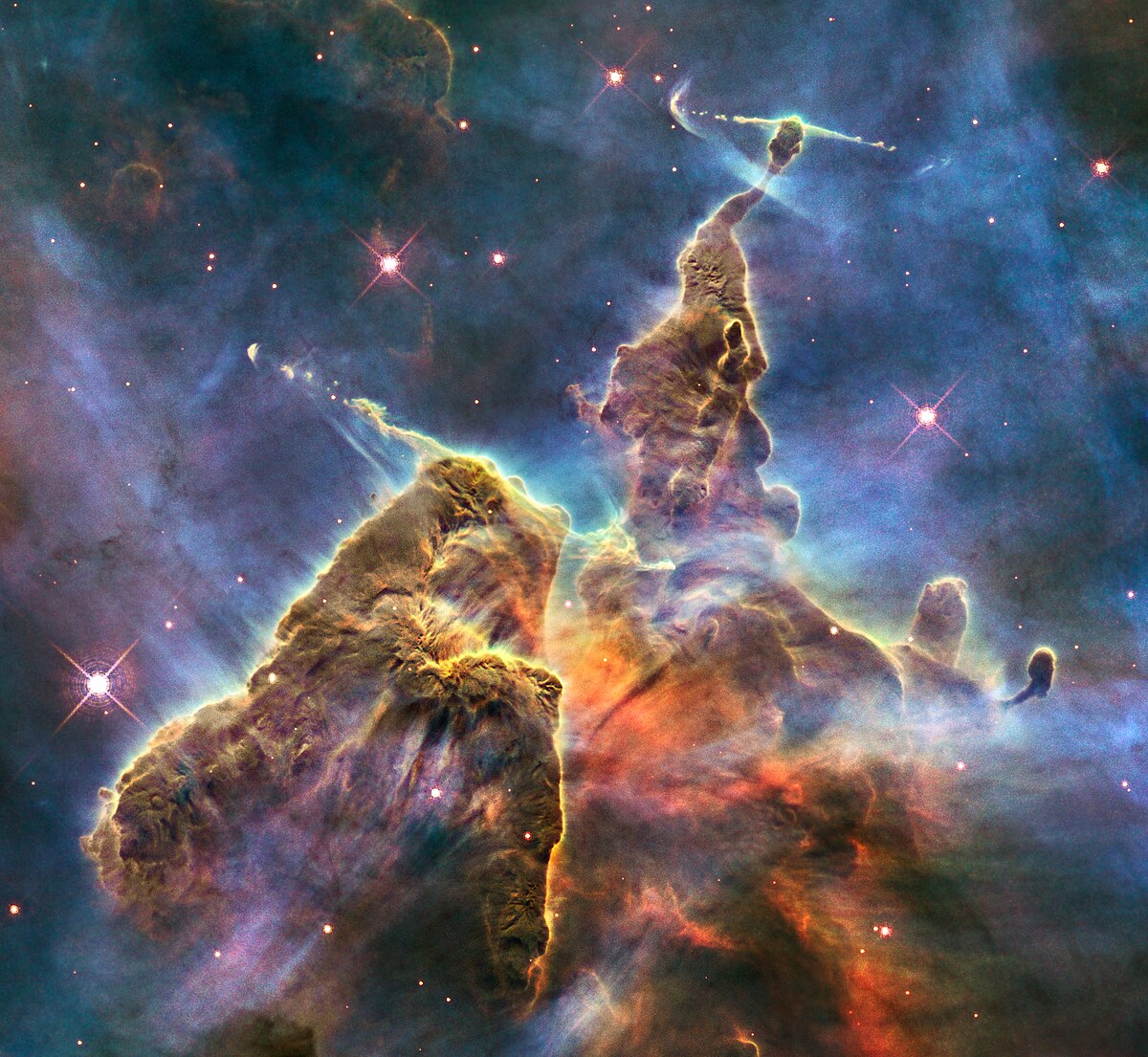Why do things disagree with one another? There may be nothing wrong with either of them on their own, but together, they just don't mesh. Imagine you have bought a new brand a coffee for your friends and everyone likes it except one person - to him or her, the coffee appears to make this kind of face:

- Depresso.png (122.31 KiB) Viewed 1653 times
One of your friends didn't like the coffee because of his or her personal taste. Don't sweat it. There was nothing wrong with the coffee in itself, and people have different tastes.
I'm like that picky friend, in that today's APOD doesn't appeal very much to me because of my strong ideas about color.

That's me. Don't sweat it.¯\_(ツ)_/¯
Anyway. Normally I always post a picture of today's APOD, but not today, because the APOD is too large. So I'll post another picture of the Tadpole Nebula:
The picture by Christopher Gomez and Ruben Barbosa has a tighter field of view than the APOD, and their palette is not the same, either. But you can see the tadpoles very well, and the young cluster, NGC 1893, is quite visible as it is peeking out behind a dust cloud.
Very little seems to be known about the central cluster of the Tadpole Nebula, but I'm going to guess that it is reasonably similar to the cluster inside the Flame Nebula:
The Flame Nebula cluster is completely hidden from us at optical wavelengths, but it is reasonably close to us at ~1,500 light-years. Cluster NGC 1893 can be detected at optical wavelengths, but it is some ~8 times farther away from us than the Flame Nebula Cluster.
And the stars inside the Tadpole Nebula cluster are energetic. How do we know? It's because the central part of the Tadpole often looks "all blue" in narrowband images due to OIII emission. The presence of so much OIII emission is itself a sign of high levels of ionization usually caused by hot stars:
In visual light, IC 405 is bluer than the Tadpole Nebula:
The Tadpole Nebula (left) and the Flaming Star Nebula (right). Credit: Éder Iván
The reason why the Flaming Star Nebula is partly bluish at visible wavelengths is that the entire Flaming Star Nebula has been lit up by a single star, runaway star
AE Aurigae. AE Aurigae just blundered into this cloud of gas and dust during its headlong flight through space, and its ultraviolet light has ionized the hydrogen of this gas cloud and made it glow red, while the blue light of the star has lit up dust in the nebula.
No blue light can really be seen from the Tadpole Nebula, which is lit up not by one star, but by a whole cluster. Fun fact, though: The Tadpole Nebula is almost
ten times farther away than the Flaming Star Nebula! Therefore the Tadpole Nebula is much more reddened by dust, but you can also imagine how much
bigger it really is than the Flaming Star Nebula.
What about the Tadpoles, though? Well, they are simply pillars of exactly the same kind as the
Pillars of Creation in the Eagle Nebula. These structures form as the nebula that birthed the stars is being eaten away by the ultraviolet light and harsh stellar winds from the hottest stars that it just gave birth to. The thickest parts of the nebulas form "comet heads" which shield the "downwind areas" behind them, thus forming pillars.
I must return for a moment to Éder Iván's picture of the Tadpole and the Flaming Star nebulas. I can't resist:
Ladies and gentlemen, meet IQ Aurigae! The hottest and bluest of all stars that have been classified as spectral class A. It has been classified as spectral class A because its helium lines are weak, but its color is characteristic of spectral class B4, and its temperature is 17,000 K, about double that of most A-type stars.
Yes, yes, I know, you were all so excited to learn about IQ Aurigae!! Don't you thank me all at once!

But before I go, I must talk about my absolutely favorite thing about today's APOD. I would so much like to post the APOD here, but I can't, because it is too big, and I have used up my three attachments. But look at the APOD yourselves. Look at what is written in the lower right corner:
Carpe Noctem.
Isn't it lovely? We all know about Carpe Diem: Seize the day, grab hold of your day, don't let it slip through your fingers. Carpe Noctem means, obviously, seize the night. See the beauty of the night and show it to other people.
I love that. Thank you, Sander de Jong!
[youtube]
https://www.youtube.com/watch?app=desktop&v=pV58YptFTK0[/youtube]
Ann
 NGC 1893 and the Tadpoles of IC 410
NGC 1893 and the Tadpoles of IC 410





